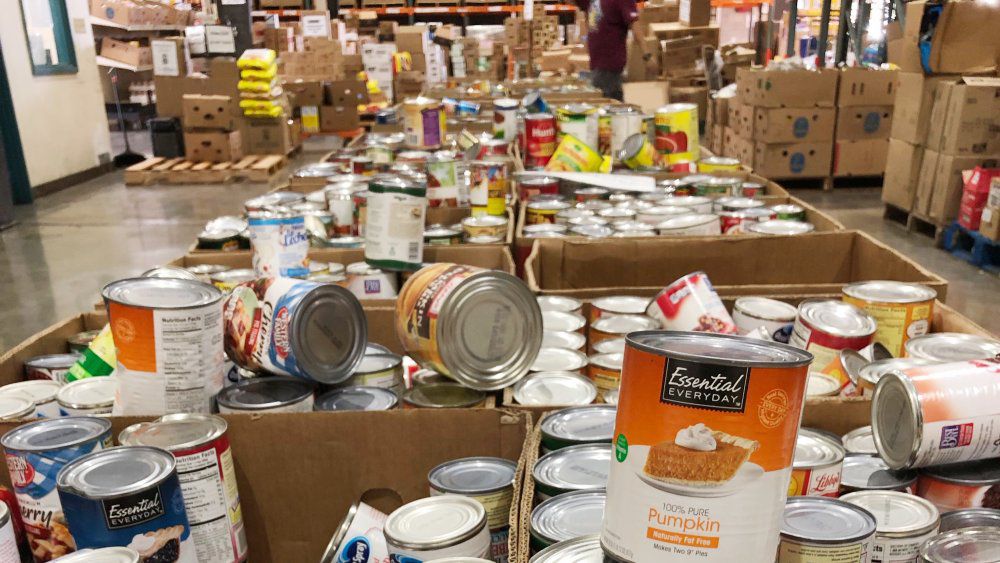COLUMBUS, Ohio — A study from the Ohio Association of Foodbanks has found that, among surveyed foodbank clients, an “alarming number” have to choose between food and other essential items.
The survey received 2,301 validated responses from those who went to food distributions in various communities from April 15 through May 12 this year, according to a press release from the organization.
“The stark reality revealed by this study is a wake-up call for all of us. It is unacceptable that so many Ohioans are forced to make impossible choices between feeding their families and covering basic needs like transportation and housing,” said Joree Novotny, executive director for the Ohio Association of Foodbanks, in the release. “Ohio's food banks are operating at full capacity, yet the demand continues to grow. The fact that so many people are skipping meals and struggling to balance essential expenses highlights the urgent need for action.”
Here's some of the highlights from the study:
- Around 65% of households reported that adults have skipped meals within the year due to not having enough, with almost 35% saying this occurred “every month or almost every month”
- Almost 60% of those surveyed are not part of the Supplemental Nutrition Assistance Program (SNAP), and they found that around two-thirds of those who are say their benefits run out “in two weeks or less each month”
- Their findings confirmed that the majority of those able to work are doing so and that the majority of those not working say it’s due an illness/disability or that they are retired in addition to other reasons
- They found around 90% of respondents said they expect to need help from food banks as often or more in the next year compared to this one
When it comes to what people are weighing purchasing against food, here’s what the study found:
- 72.5% had to choose between food and transportation/gas
- 65.2% had to choose between food and utilities
- 57.8% had to choose between food or medicine/health care
- 49.5% had to choose between food and housing
- 23.3% had to choose between food and educational expenses
- 14.9% had to choose between food and affording child care”
The Ohio Association of Foodbanks also expressed its opinions on a number of state and federal issues related to nutrition.
“As the State of Ohio works to develop its biennial budget and as Congress works to reauthorize the Farm Bill, it is imperative that funding and safeguards are included to protect and further strengthen federal and state nutrition programs,” the release reads.
They are asking that Ohio invest $50 million per year in the 2026-27 biennial budget toward “state funded food sourcing programs.” They are also asking the state to “invest in a state-funded minimum SNAP benefit for older adults, commit to hunger-free campuses across the state, and ensure universal school meals for all students.”
When it comes to the Farm Bill, they are asking that congress support programs like SNAP and The Emergency Food Assistance Program (TEFAP).
Specifically for TEFAP, they’re asking that congress increases funding to $960 million a year in addition to authorizing $200 million a year toward storage and distribution funds and $15 million a year for infrastructure grants.
For SNAP, they’re asking that the benefits “be set at an adequate level so families can purchase healthy foods.”
They are also asking for “immediate and permanent funding” the Local Food Purchase Assistance program. This is Ohio Community Agriculture and Nutrition (CAN) in the Buckeye state.
“As our state and federal leaders deliberate on the biennial budget and the Farm Bill, it is critical that they prioritize robust funding and protective measures to support state funded food sourcing programs. Investing $50 million annually in Ohio’s hunger relief network will be a vital step in addressing rising demand and ensuring that every family has access to essential food and household items,” Novotny said in the release. “It is also crucial that we reinforce and improve programs like TEFAP and SNAP at the federal level and secure continued funding for LFPA. These programs make a lasting impact in our fight against hunger. We are calling on our state and federal leaders to make a firm, demonstrated commitment to ensure that no Ohioan goes hungry.”



